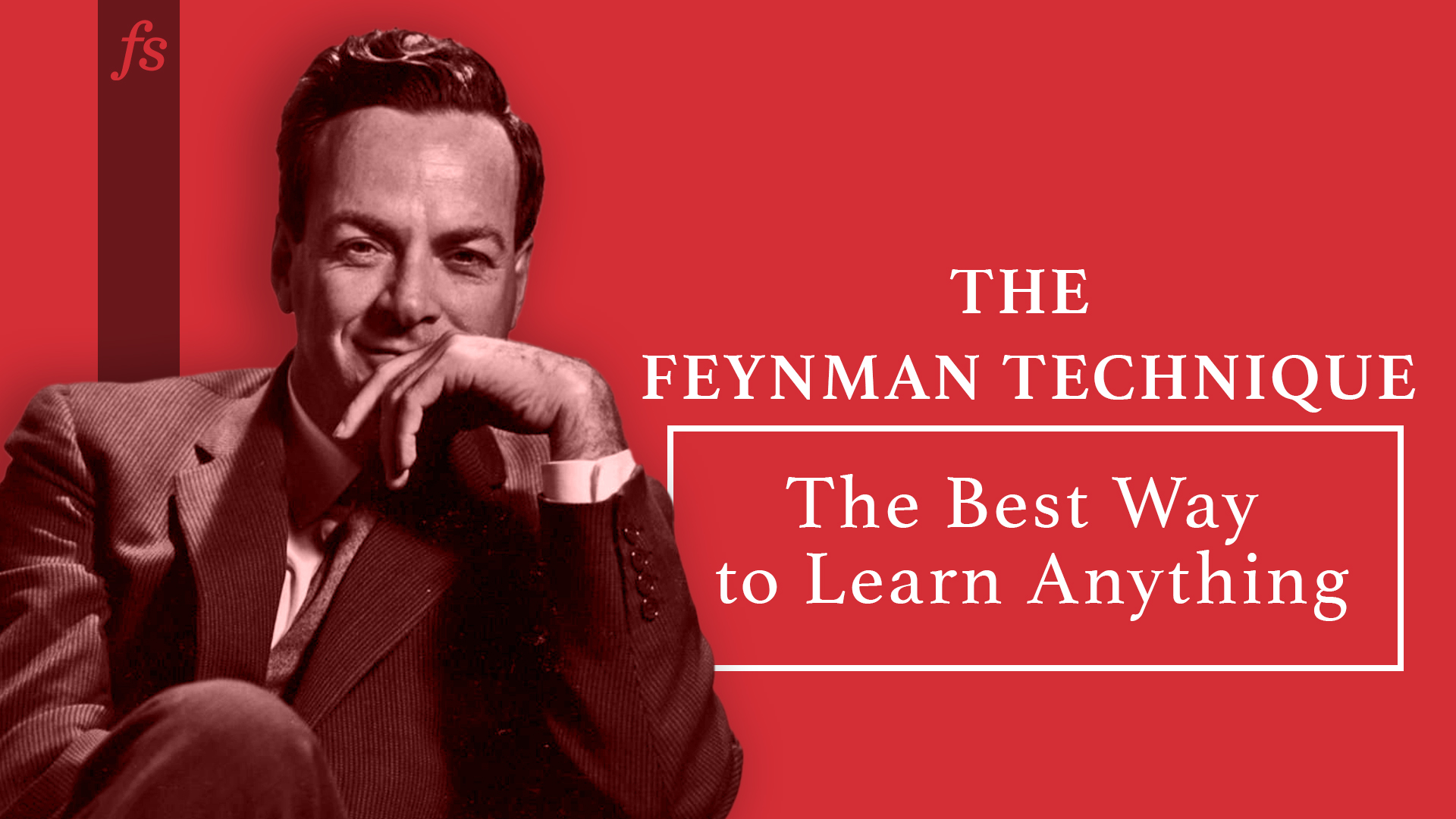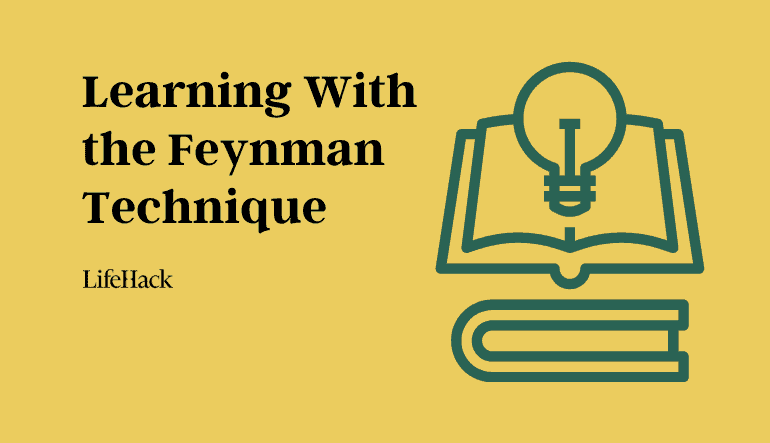When I polled a few hundred entrepreneurs on how they best liked to learn, "teaching" was a top answer. Indeed, the old medical school rule of thumb confirms that to really know a procedure you must:
- Watch one
- Do one
- Teach one
Simply being exposed to an idea provides the minimum level of learning. Working or playing with it increases our level of understanding, but the highest level of mastery often comes from sharing what we learn with others so they can do it to.
Not everyone is comfortable with jumping in and teaching, but I believe you can capture up to 80% of the benefits of teaching by following the technique developed by Richard Feynman, the famed theoretical physicist who won the Nobel Prize in 1965. Feynman was revered for his love of learning and curiosity.
Four Steps to Better Learning
The Feynman Technique in a nutshell, involves explaining something you just learned in plain and simple language like you are explaining it to a twelve year old.
As Feynman said, "Anyone can make something complicated. Only someone who truly understands a topic can make it simple."
The four steps to following Feynman's Technique are as follows:
- Study
- Teach
- Fill the Gaps
- Simplify
In a practical way, in relation to building a SecondBrain, I have modified this process to:
- Be intentional, what is it you are trying to learn? (Study can be reading, listening, watching, or participating)
- Write out what you just learned in plain words, as simply as possible.
- Go back, and fill in any gaps.
- Try to simplify as much as possible.
We learn processes different from narratives
Virtually every family has a recipe book, and if not a book, then an app loaded with recipes. But no one I know has a book which summarizes concisely every story or movie they have ever watched. Why?
Because our brains are built to archive narratives, we rarely need help remembering the plot, the feelings, and the meaning of stories. However, when it comes to processes, sequences of steps - our brains stumble.
This is why writing down new information, especially ideas that are meant to be put into action is essential. What's more, being able to explain, in your own words, what you learned creates more connections, associations, and scaffolding to hold the ideas.
Avoid Copy and Paste
With modern technology and tools like Readwise.io, or transcripts from YouTube, or Generative AI it is easier than ever to get the content you want in text form and paste it into your note base. This is obviously better than nothing, however it stops short of teaching. Why? Because you are not using your brain to actually process the concepts.
Like highlighting in a book, this kind of learning can lead to what psychologists call, "The Unread Library Book Effect." In short, it leads to overconfidence. You believe you know something because you have "checked out a book from the library of human knowledge" without really reading it and making it your own.
Even if you do copy and paste - (which I do all the time), the real learning comes when you restate the information in your own words, when you try to teach it as simply as possible. One effective way I have learned to process knew information is to use the ADEPT model of teaching.
ADEPT Model
In speaking, I was warned to avoid "speaking in the language of the expert." Too often we fall into jargon, buzzwords, or communicate from a perspective that can be hard to follow for the lay person. Translating a complex idea so it can be simply understood, can be done, but it often requires not only effort, but real understanding.
This is why teaching is so effective. One way to teach a topic simply and effectively is to use the ADEPT model. ADEPT stands for:
- Analogy - Begin with an analogy, something familiar. This concept is like... this builds a bridge and connection from the familiar to the new.
- Diagram - Make the new concept visual if possible. Anchoring new ideas in imagery makes the idea more concrete. The more senses you involve in learning, the easier it is for us to remember.
- Example - Show us what it looks like with an example. What does it look like in practice? Help the learner experience it.
- Plain English - Use simple words, be direct and avoid jargon.
- Terminology - Only at the end should you introduce specific technical words or jargon.
To recap, the adept model involves making the new ideas relatable, concrete, experiential, easy to grasp, and finally labeling with new terms.
You start with something I know, help me see it, experience it, and understand it, and finally label it.
Review, Reflect, Refine
It has been my experience that when I am first learning something, I have gaps in my knowledge. Someone once explained to me that process learning is like dealing with Russian Nesting dolls. You don't really know what you know until you open all the dolls. You might feel like you know something with a high degree of confidence, but you have to unpack the process to make sure there are no missing parts.
Using the Feynman technique allows us to open every doll and find the missing ones. Then we can go back and fill in gaps of missing information.
One classic example of the gaps we have involves the common flush toilet. Ask most people if they know how a toilet works, they will tell you they know. But ask them to explain in detail and they often stumble. The two most common places they get stuck are a) how the water gets from the tank into the bowl and b) how the S-trap works that keeps all the water from running down the drain.
The important thing here, is their confidence in what they know is not supported when they actually unpack the process information and have to explain it. (this is also called The illusion of explanatory depth - meaning, we think we know it better than we do.) This is one reason everyone writes down recipes, but rarely family histories. We remember the stories quite well, but process steps? We need a memory assist.
Conclusion
I want to point out, that any work you do to summarize or share something you learn increases your retention. You don't have to write pages and pages of content. Even talking with someone, sharing what you learned increases your retention and learning. But we don't always have the chance to do that.
Therefore, restating what you have learned, to yourself, in a note, is a great way to integrate new knowledge into your own life and make it available.
By all accounts Feynman was a genius, and he was clear that one of the tools he used to develop his brilliant mind was to create simple summaries of what he learned. In my experience, following his practices has helped me become a more effective life long learner.
Give it a try, and see what it does for you.
Resources
There are multiple great sources on the Feynman technique. One of my favorites is from Farnham Street:








